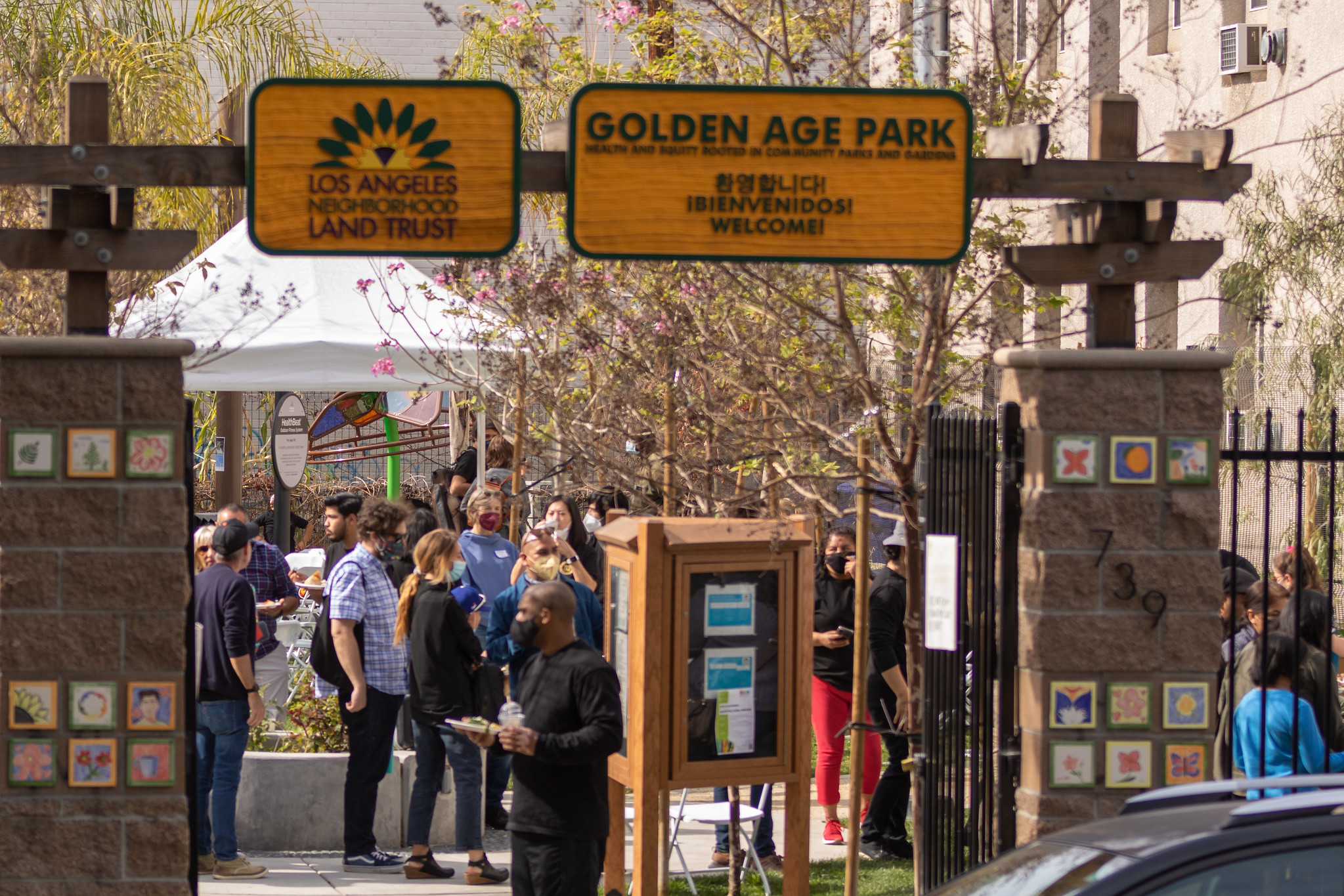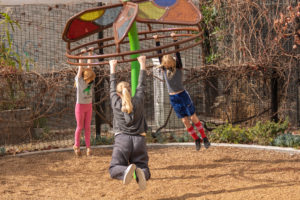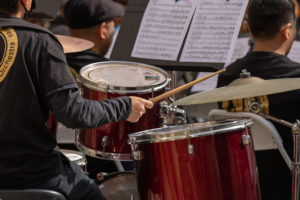Blog
Golden Age Park: Activating urban public space for IG engagement

by Claire Nelischer and Anastasia Loukaitou-Sideris
During a sunny Saturday in February 2022, in the central city neighborhood of Westlake, Los Angeles, a quiet pocket park was transformed into a bustling intergenerational space for music, art, food, and community.
The one-day event, orchestrated by UCLA’s UnCommon Public Space group, used creative programming strategies to welcome children, older adults, and people of all ages to Golden Age Park. An intergenerational orchestra from a neighborhood arts-based organization filled the space with sound, while a Shakespeare troupe featuring both children and older adults performed excerpts from A Midsummer Night’s Dream. Park visitors, including neighborhood residents, UCLA (University of California Los Angeles) students and faculty, and representatives of local community organizations, mingled and enjoyed the performances along with a lunch of tamales. Children explored the play structures, older adults tried out the fitness equipment, and visitors of all ages learned about the park’s community garden space.
Westlake isa densely-populated, low-income, immigrant neighborhood in Los Angeles with limited park access. The event illustrated the potential for well-designed and creatively programmed public environments to support meaningful engagement, learning, and interaction among generations. It also reflected many of the key lessons we have learned in our recent review of research on intergenerational public space.
The Golden Age Park event is connected to a larger research initiative exploring and promoting intergenerational spaces in disinvested communities in the U.S. Intergenerational public space approaches use environmental design, public policy, and programming strategies to create public environments that meet the unique age-based needs of different generations, while supporting engagement between different generations. In addition to removing physical and social barriers to the participation of children, youth and older adults in public spaces, such strategies also promote meaningful relationships and interactions. Given the persistent spatial and social segregation of children and older adults in urban environments, intergenerational public spaces are vitally important in growing and aging cities.

Intergenerational public space approaches seek to connect within and across two parallel sets of interests: child-friendly and age-friendly cities, and the built and social environment. The benefits are many, and include improved individual health and well-being, enhanced social inclusion and solidarity among generations, as well as broader community development. The process through which intergenerational public spaces are developed is critical to their success; participatory planning strategies “give voice” to children, youth, and older adults, enabling them to engage in park development and ensuring that resulting spaces reflect their needs and aspirations. Beyond the development of individual parks, intergenerational public space may be advanced more broadly by embedding intergenerational approaches into policy development and professional practice. Breaking down silos between environmental designers and intergenerational practitioners can advance meaningful, shared public environments and programs.
 We saw many of these ideas in action during the event at Golden Age Park. The tiny park was created by the nonprofit LA Neighborhood Land Trust on a formerly vacant lot to serve as a permanent public space designed with older adults in mind, while also inclusive of other age groups. It is a small and tranquil space, with accessible pathways for walking, a range of seating options, low-impact exercise machines alongside a children’s play structure, and an abundance of flowering and food producing plants. The event’s programming not only brought people of all ages to the park, but created opportunities for spontaneous interaction through food, art, and music. The process of producing the event brought together an interdisciplinary group of community-based organizations, students, and practitioners to creatively activate the space using research, performance, and community connections.
We saw many of these ideas in action during the event at Golden Age Park. The tiny park was created by the nonprofit LA Neighborhood Land Trust on a formerly vacant lot to serve as a permanent public space designed with older adults in mind, while also inclusive of other age groups. It is a small and tranquil space, with accessible pathways for walking, a range of seating options, low-impact exercise machines alongside a children’s play structure, and an abundance of flowering and food producing plants. The event’s programming not only brought people of all ages to the park, but created opportunities for spontaneous interaction through food, art, and music. The process of producing the event brought together an interdisciplinary group of community-based organizations, students, and practitioners to creatively activate the space using research, performance, and community connections.
This experience at Golden Age Park, as well as the broader findings of our research on intergenerational public space, suggest promising directions for future research and practice to better understand, implement, and evaluate intergenerational public spaces, thus supporting understanding and belonging across generations.
Authors: Claire Nelischer and Anastasia Loukaitou-Sideris
Photos by Les Dunseith.